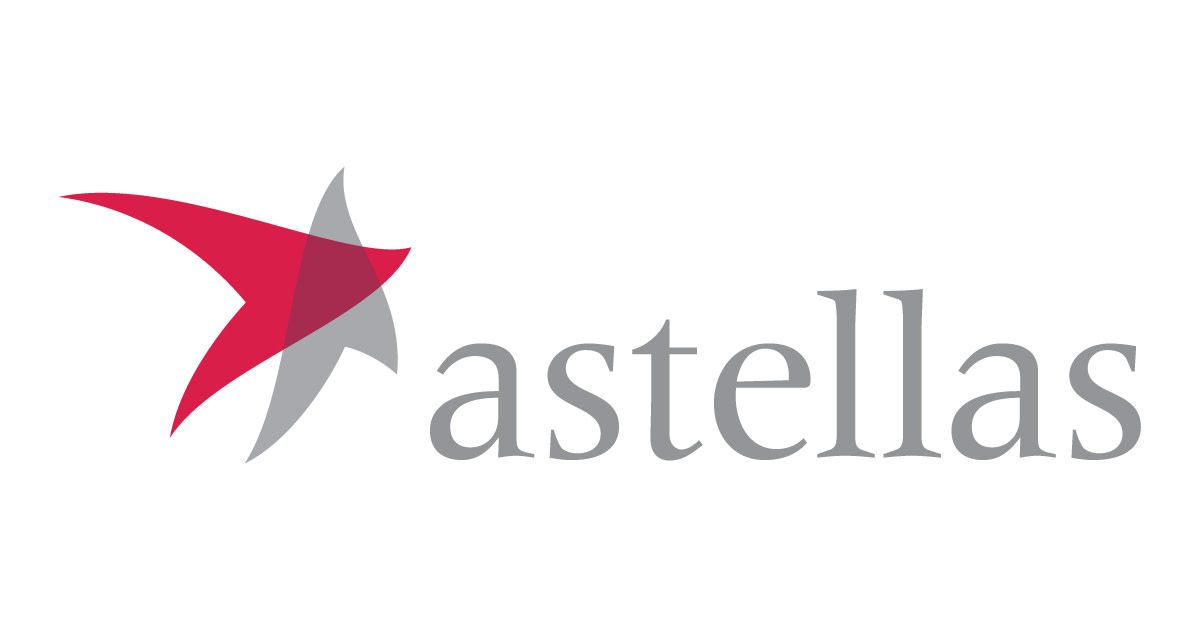预约演示
更新于:2025-09-20
STING Inhibitor (Astellas)
STING抑制剂(安斯泰来)
更新于:2025-09-20
概要
基本信息
非在研机构- |
权益机构- |
最高研发阶段临床前 |
首次获批日期- |
最高研发阶段(中国)- |
特殊审评- |
关联
100 项与 STING抑制剂(安斯泰来) 相关的临床结果
登录后查看更多信息
100 项与 STING抑制剂(安斯泰来) 相关的转化医学
登录后查看更多信息
100 项与 STING抑制剂(安斯泰来) 相关的专利(医药)
登录后查看更多信息
34
项与 STING抑制剂(安斯泰来) 相关的文献(医药)2025-12-01·FREE RADICAL BIOLOGY AND MEDICINE
Exercise training ameliorates high-fat diet-induced skeletal muscle atrophy and ferroptosis via downregulation of STING
Article
作者: Xu, Zujie ; Ma, Zheying ; Ren, Huiqian ; Zhao, Xiaoqin ; Pan, Shou ; Zhang, Bing ; Yang, Yaming ; Tang, Jie
BACKGROUND:
High-fat diet (HFD)-induced sarcopenic obesity can lead to reductions in muscle fiber diameter, enhanced protein degradation, and various forms of cell death. Exercise training has been shown to alleviate HFD-induced muscle atrophy. However, the underlying mechanism remains unclear. Stimulator of interferon genes (STING) is involved in ferroptosis and various forms of muscle atrophy. This study aimed to investigate the role of STING in exercise training against HFD-induced skeletal muscle atrophy.
METHODS:
In vivo, HFD-fed mice were subjected to exercise training and were intraperitoneally injected with the STING agonist diABZI or selective STING inhibitor C-176 for 8 weeks. In vitro, the differentiated C2C12 myotubes were treated with palmitic acid (PA), followed by interventions with Ferrostatin-1 (Fer-1), Erastin, diABZI or C-176. Grip strength test, body composition analysis, serum assay, histology analysis, dihydroethidium staining, transmission electron microscopy, myosin heavy chain staining, mitochondrial membrane potential, Western blot, and real-time quantitative PCR were performed.
RESULTS:
In vivo, exercise training significantly reduced the mRNA and protein expression of STING and ameliorated skeletal muscle atrophy and lipid peroxidation associated ferroptosis in HFD-fed mice. The STING agonist diABZI blunted the alleviative effect of exercise training in HFD-induced skeletal muscle atrophy and ferroptosis. The selective STING inhibitor C-176 and exercise training synergistically alleviated HFD-induced skeletal muscle atrophy and ferroptosis. In vitro, the ferroptosis inhibitor Fer-1 partially rescued PA-triggered C2C12 myotubes atrophy and ferroptosis, whereas the ferroptosis activator Erastin aggravated myotubes atrophy and ferroptosis. diABZI exacerbated PA-induced C2C12 myotubes atrophy and ferroptosis. Erastin impaired the ameliorative effect of C-176 in PA-induced C2C12 myotubes atrophy and ferroptosis.
CONCLUSIONS:
Exercise training effectively suppressed HFD-mediated upregulation of STING in skeletal muscle. STING is a response factor for the alleviative effect of exercise training in HFD-induced skeletal muscle atrophy and ferroptosis.
2025-10-01·NEUROCHEMICAL RESEARCH
Dual Targeting of TLR9 and cGAS-STING Pathways Attenuates Astrocyte Inflammatory Activation: Potential Implication in Multiple Sclerosis
Article
作者: Shao, Wenjun ; Zhang, Jiewen ; Zhang, Qian ; Huo, Xuejing ; Hao, Xiaodi ; Liu, Xiaoni
This study aims to investigate the role of Toll-like receptor 9 (TLR9), a deoxyribose nucleic acid (DNA) sensor, in astrocyte activation and its contribution to multiple sclerosis (MS) pathogenesis. Additionally, we examined whether TLR9 and the cyclic GMP-AMP synthase-stimulator of interferon genes (cGAS-STING) pathways act synergistically to promote astrocyte inflammatory activation and whether combined inhibition of both pathways offers superior protective effects. Human astrocytes were treated with unmethylated Cytosine-phosphorothioate-guanine (CpG) oligodeoxynucleotides at varying concentrations. Intervention groups included treatment with a TLR9 blocker (anti-TLR9) and a STING inhibitor (RU.521). Cellular responses were assessed by cell counting kit (CCK)-8 viability assay and Annexin V-based apoptosis detection. Enzyme-linked immunosorbent assay (ELISA) was used to quantify the secreted levels of lactate dehydrogenase (LDH), tumor necrosis factor (TNF)-α, and interleukins (IL)-6, IL-1β, and IL-18. Protein expression levels of TLR9, nuclear factor kappa B (NF-κB), phosphorylated NF-κB (p-NF-κB), STING, and cGAS were analyzed by Western blot. Treatment with unmethylated CpG oligodeoxynucleotides significantly reduced astrocyte viability and promoted apoptosis, while upregulating the expression of TLR9, p-NF-κB, and STING proteins. Combined treatment with both the TLR9 blocker and the STING inhibitor significantly restored cell viability, reduced apoptosis, and decreased the production of inflammatory factors in astrocytes. These findings suggest that targeting TLR9 and the STING pathway can alleviate astrocyte overactivation, indicating a potential therapeutic role for targeting the TLR9-cGAS-STING pathway in MS pathogenesis.
2025-09-01·INTERNATIONAL IMMUNOPHARMACOLOGY
Salvianolic acid A ameliorates sepsis through inhibiting inflammation via binding STING and modulating TBK1/IRF3 signaling pathway
Article
作者: Zhang, Ling ; Kou, Junping ; Qin, Xiangying ; Zhang, Yuanyuan ; Li, Fang ; Tang, Jiahui ; Yu, Boyang ; Zhang, Fan ; Yue, Meng ; Gong, Shuaishuai ; Yu, Shihui ; Zhang, Liyuan
Sepsis is a condition characterized by a systemic inflammatory response due to infection, resulting in numerous organ dysfunction. Salvianolic acid A (SAA) is a phenolic acid substance extracted from the plant Salvia miltiorrhiza Bunge, possessing antioxidant and anti-platelet aggregation properties. Although aberrant stimulator of interferon genes (STING) signaling is associated with sepsis, it is uncertain if SAA can influence this pathway to avert sepsis-induced organ injury. This study examined the antiseptic efficacy and biological mechanisms of SAA. The pharmacodynamics and mechanism of action of SAA in countering STING-induced inflammation during sepsis were investigated utilizing a cecal ligation and puncture (CLP) sepsis animal model. In vitro, RAW264.7 and THP-1 cells were preincubated with SAA for one hour before exposure to lipopolysaccharide (LPS). The molecular mechanism of SAA in the treatment of sepsis was examined by biochemical assays, pathological sections, enzyme-linked immunosorbent assay (ELISA), and western blot analysis. The association between SAA and its targets was examined via cellular thermal shift assay (CETSA), molecular docking, and molecular dynamics simulation analysis. The SAA intervention enhanced the survival rate of mice (18.75 % in the model group versus 55 % in the high-dose group) and dramatically reduced neutrophil infiltration in lung tissue as well as histological changes. It enhanced hepatorenal function and reduced inflammatory cytokines. Furthermore, the in vivo findings demonstrated that SAA could suppress the activation of the STING and TBK1/IRF3 signaling pathway, corroborating the in vitro results. SAA directly interacts with STING and regulates the TBK1/IRF3 signaling pathway to mitigate organ damage and inflammation caused by sepsis. It may serve as a viable therapeutic agent and prospective STING inhibitor.
18
项与 STING抑制剂(安斯泰来) 相关的新闻(医药)2025-07-06
·生物世界
撰文丨王聪编辑丨王多鱼排版丨水成文程序性坏死(Necroptosis),也叫坏死性凋亡,是一种有别于细胞凋亡的程序性细胞死亡方式,这是一种促炎性、裂解性细胞死亡,由 MLKL 蛋白执行。在各种炎症信号诱导细胞发生程序性坏死时,RIPK3 会使 MLKL 发生磷酸化,MLKL 从细胞质转移到质膜,导致膜破裂并释放损伤相关分子模式(DAMP)。2025 年 7 月 3 日,北京生命科学研究所/清华大学生物医学交叉研究院王晓东院士团队(丁璋诚博士为第一作者)在 Cell 子刊 Molecular Cell 上以封面论文形式发表了题为:MLKL activates the cGAS-STING pathway by releasing mitochondrial DNA upon necroptosis induction 的研究论文。该研究发现,MLKL 在诱导细胞程序性坏死时通过释放线粒体 DNA(mtDNA)激活 cGAS-STING 通路,从而导致干扰素β(Ifnb)表达上调,引发炎症,这一过程独立于细胞膜破裂。在程序性坏死介导的炎症性肠病(IBD)小鼠模型中,STING 抑制剂能加速肠道炎症消退。这项研究深化了我们对程序性坏死的理解,并对 IBD 治疗具有积极意义。众所周知,线粒体是细胞的能量工厂,但当其内外两层膜均遭破坏时,它们就会成为引发炎症的强大力量。在这个封面中,研究团队用汽水瓶作比喻来形象地展示这一转变。瓶子代表线粒体,而逸出的气泡则象征着线粒体 DNA(mtDNA)的释放——这是先天免疫的一个关键激活因素。一个标有“MLKL”的开瓶器形象地说明了 MLKL(一种程序性坏死效应蛋白)在使线粒体膜通透化方面的作用,就像开瓶器能释放密封汽水瓶中的压力一样,MLKL 会破坏线粒体的完整性,引发线粒体 DNA 泄漏和炎症信号转导。封面插画由 Mengli Shi 创作。在这项最新研究中,研究团队发现,磷酸化的 MLKL(pMLKL)也会转移到线粒体,并诱导一种微管依赖的线粒体 DNA(mtDNA)释放。释放的 mtDNA 激活了 cGAS-STING 通路,从而导致干扰素β(Ifnb)表达的上调。研究团队进一步发现,在一个由程序性坏死介导的炎症性肠病(IBD)小鼠模型中,干扰 cGAS-STING 通路可减轻炎症并促进肠道恢复。因此,MLKL 不仅通过释放损伤相关分子模式(DAMP)信号以非细胞自主的方式诱导炎症,还通过导致线粒体 DNA 泄漏到细胞质中以细胞自主的方式激活 cGAS-STING 通路,从而引发炎症。该研究的核心发现:在程序性坏死过程中,pMLKL 会引发线粒体 DNA(mtDNA)的释放;程序性坏死诱导 mtDNA-cGAS-STING 依赖的干扰素β(Ifnb)表达;微管的完整性对于 mtDNA 释放至细胞质是必需的;mtDNA-STING 信号轴驱动程序性坏死相关的肠道炎症。总的来说,这项研究表明,在程序性坏死过程中,磷酸化的 MLKL(pMLKL)除了破坏细胞膜外,还会导致线粒体膜破损并释放其中的 mtDNA,进而激活 cGAS-STING 通路,诱导干扰素β(Ifnb)表达。在程序性坏死介导的炎症性肠病(IBD)小鼠模型中,STING 抑制剂能加速肠道炎症消退。这项研究深化了我们对程序性坏死的理解,并对 IBD 治疗具有积极意义。论文链接:https://www-cell-com.libproxy1.nus.edu.sg/molecular-cell/abstract/S1097-2765(25)00505-2设置星标,不错过精彩推文开放转载欢迎转发到朋友圈和微信群 微信加群 为促进前沿研究的传播和交流,我们组建了多个专业交流群,长按下方二维码,即可添加小编微信进群,由于申请人数较多,添加微信时请备注:学校/专业/姓名,如果是PI/教授,还请注明。点在看,传递你的品味
临床1期
2025-06-05
·药学进展
“点击蓝字 关注我们王琛中国药科大学生命科学与技术学院二级教授、博士生导师。主持国家自然科学基金青年科学基金项目(A类),国务院政府特殊津贴获得者、新世纪百千万人才工程国家级人选、国务院突出贡献中青年专家、国家重点研发计划项目负责人、江苏省“双创团队”领军人才、中国药科大学兴药杰出科学家。曾任上海市第十三、十四届人大代表和第十一届全国青年委员。现任中国病理生理学会蛋白质修饰与疾病专业委员会副主任、江苏省生物技术学会副理事长(第八届)等。长期聚焦于发现并解析宿主模式识别受体的特异性识别、细胞信号转导关键通路的组成与动态变化、早期免疫应答反应的时空特性,阐释固有免疫与急性炎症相关的分子调控机制。特别关注泛素与类泛素化修饰调控固有免疫和炎症的新功能与新机制,并从天然小分子化合物库中筛选并研究调控相关通路的先导化合物。在Nature,Cell,Immunity,Nature Immunol,PNAS,Autophagy,Cell Rep,PLOS Pathog等期刊发表研究论文100余篇,他引8 000余次;主编《泛素家族介导的蛋白质降解和细胞自噬》等著作。靶向STING药物的研究进展 PPS 石雪松1,朱娟娟1,王琛1,2*(1. 中国药科大学生命科学与技术学院,江苏 南京 211198;2. 中国药科大学多靶标天然药物全国重点实验室,江苏 南京 210009)[摘要]固有免疫反应构成了宿主抵御病原体入侵的首道防线,在此过程中,环鸟苷酸-腺苷酸合酶(cyclic GMP-AMP synthase,cGAS)/干扰素基因刺激因子(stimulator of interferon gene,STING)通路发挥着核心作用。该通路不仅能够识别胞质中的双链DNA,进而触发固有免疫反应,还与抗肿瘤免疫、衰老进程、神经退行性疾病以及自身免疫病的发展存在紧密关联。综述近年来STING调控剂的研究进展,以及其在抗肿瘤疗法和自身免疫病治疗中的应用情况;探讨其在延缓衰老、治疗神经退行性疾病以及作为疫苗佐剂等方面的应用前景,旨在为靶向STING的药物研发提供参考依据。固有免疫反应作为宿主抵御病原体入侵的首道防线,在机体免疫防御体系中扮演着至关重要的角色。它能够有效限制病原体在宿主体内的增殖与扩散,同时通过抗原呈递以及释放细胞因子等关键机制,激活适应性免疫反应,为机体构筑起更为全面、精准的免疫防护网络。宿主主要借助模式识别受体(pattern recognition receptor,PRR)识别病原相关分子模式(pathogen-associated molecular pattern,PAMP)或损伤相关分子模式(damage-associated molecular pattern,DAMP),从而触发固有免疫反应。双链DNA(double-stranded DNA ,dsDNA)兼具PAMP和DAMP的双重属性,可被环鸟苷酸-腺苷酸合酶(cyclic GMP-AMP synthase,cGAS)/干扰素基因刺激因子(stimulator of interferon gene,STING)通路精准识别。这一识别过程对于生物体应对病原体感染等诸多挑战具有不可或缺的意义,能够及时启动免疫应答,抵御外界侵害。值得注意的是,cGAS/STING通路不仅在免疫防御中发挥关键作用,还与抗肿瘤免疫、衰老进程、神经退行性疾病以及自身免疫病的发生发展密切相关。鉴于此,cGAS/STING通路的调控剂,尤其是作为枢纽分子的STING的调控剂,已成为当前药物研发领域的研究热点。目前,众多靶向该通路的先导化合物在临床前试验中已展现出令人瞩目的活性,为药物研发带来了新的希望。然而,截至目前,尚未有相关药物成功上市。基于此,本文旨在对近年来靶向STING的调控剂的研发进展进行系统综述,并深入探讨此类药物的研究方向,期望能为新药研发以及新靶点的挖掘提供有益的思路和参考。1cGAS/STING通路介导固有免疫反应dsDNA与cGAS相结合时,能够诱导cGAS活性位点发生特定的构象变化。这种构象变化使得cGAS能够高效催化腺苷三磷酸(adenosine triphosphate,ATP)和鸟苷三磷酸(guanosine triphosphate,GTP),进而生成2',3'-环鸟苷酸-腺苷酸(cyclic guanosine monophosphate-adenosine mono-phosphate,cGAMP),最终实现对STING的激活。STING是一种定位于内质网(endoplasmic reticulum,ER)的跨膜蛋白,其结构主要由跨膜结构域(transmembrane domain,TMD)、配体结合结构域(ligand-binding domain,LBD)和羧基端尾巴(C-terminal tail,CTT)构成。值得注意的是,STING单体的LBD无法形成完整的配体结合口袋,因此,STING需以同源二聚体的形式存在才能发挥其生物学功能。STING二聚体呈现出独特的蝴蝶状结构,其中2个LBD形成“V”字形口袋,用于特异性结合配体[1]。配体与STING的结合是激活STING并促使其发生细胞内转移的关键步骤。当STING被激活后,它会从ER脱离,随后经ER-高尔基体中间区(ER-Golgi intermediate compartment,ERGIC)向高尔基体移动,接着通过再循环内体(recycling endosome,RE),最终在溶酶体中被降解[2-3]。在这一动态过程中,激活后的STING展现出多方面的生物学效应。一方面,它能够招募并激活TANK结合激酶1(TANK-binding kinase 1,TBK1)和干扰素调节因子3(interferon regulatory factor 3,IRF3),进而上调Ⅰ型干扰素(type I interferon,IFN-I)基因的表达水平;另一方面,它会促使κB抑制因子(inhibitor of κB,IκB)发生降解,从而激活NF-κB信号通路,引发促炎因子的释放[3]。2STING与相关疾病2.1 STING与癌症癌症是全球范围内主要的致死病因之一。当前,癌症的主要治疗方法包括放疗、化疗以及免疫检查点抑制剂疗法,这些疗法均依赖于免疫系统介导的抗肿瘤反应。STING作为cGAS/STING通路中的关键分子,在抗肿瘤免疫过程中发挥着至关重要的作用。一方面,激活STING能够增强树突状细胞(dendritic cell,DC)对肿瘤抗原的交叉呈递能力,进而激活CD8+T细胞[4]。另一方面,STING还可增强T细胞的启动(priming)和迁移。肿瘤来源的DNA能够激活抗原呈递细胞(antigen presenting cell,APC)中的cGAS/STING/IFN-β轴,从而增强CD8+T细胞的启动。同时,APC产生的IFN-I会增加趋化因子C-X-C基序趋化因子配体(C-X-C motif chemokine ligand,CXCL)9和CXCL10的分泌,促进T细胞向肿瘤组织迁移和浸润[5]。然而,染色体不稳定会致使cGAS/STING通路发生慢性激活,使癌细胞对IFN-I产生耐受,进而促进肿瘤转移[4-5]。由此可见,STING在肿瘤微环境中的作用具有细胞特异性,因此,实现STING调控剂的选择性递送成为肿瘤免疫治疗领域的研究重点。2.2 STING的激活与自身免疫病cGAS/STING通路激活后所产生的IFN-I和促炎细胞因子参与了多种自身免疫病的发病过程。例如,IFN-I是系统性红斑狼疮(systemic lupus erythematosus,SLE)的主要致病因子之一[6]。在SLE患者的细胞质中,线粒体DNA(mitochondrial DNA,mtDNA)可激活cGAS/STING通路,导致大量IFN-I产生,进而推动疾病进展[7]。此外,STING的功能获得性突变也会引发自身免疫病,如婴儿期发病的STING相关血管病(STING-associated vasculopathy with onset in infancy,SAVI)。在此类疾病中,STING突变体可自发多聚化,引发下游IFN-I信号和促炎细胞因子的持续激活,致使患者出现冻疮样皮炎和间质性肺病等症状[8]。综上所述,STING在多种自身免疫病的发病机制中扮演着核心角色,STING抑制剂有望成为治疗此类疾病的通用药物,具有重大的临床应用价值。2.3 STING与细胞衰老和神经退行性疾病衰老是细胞因丧失增殖能力而进入的一种不可逆功能衰退状态,其典型特征之一是衰老相关分泌表型(secretory-associated senescence phenotype,SASP)。cGAS/STING通路可通过多种机制加速衰老进程。在衰老细胞中,3'-修复核酸外切酶1(three prime repair exonuclease 1,TREX1)和脱氧核糖核酸酶 2(deoxyribonuclease 2,DNase2)的表达下调,导致DNA在细胞质中积累,激活cGAS/STING通路,促进IFN-β分泌,进而驱动SASP的形成[9]。衰老还与内源性逆转录病毒元件的去抑制相关。例如,人内源逆转录病毒K的蛋白和DNA会在多种衰老细胞的细胞质中积累,激活cGAS/STING通路,推动Hutchinson-Gilford早衰综合征和Werner综合征的病情进展[10]。在衰老的小胶质细胞中,线粒体稳态遭到破坏,mtDNA泄漏激活了cGAS/STING通路,引发神经退化和认知功能减退,这表明细胞器损伤可通过激活STING推动疾病进展[11]。神经退行性疾病是一类因神经元和髓鞘丧失而导致的神经元功能障碍性疾病,其共同特征是神经元发生不可逆损伤和丢失,这暗示此类疾病可能存在共同的致病机制。目前,在阿尔茨海默病、帕金森病、亨廷顿病和共济失调-毛细血管扩张症中,均观察到线粒体稳态失衡、mtDNA泄漏和cGAS/STING通路的激活,这表明mtDNA/cGAS/STING轴可能是治疗此类疾病的一个广泛适用的靶点[12]。然而,cGAS/STING通路在神经退行性疾病发生过程中的作用仍存在争议,尤其是在多发性硬化(multiple sclerosis,MS)中。一方面,Johnson等[13]发现,包封cGAMP的微粒可激活STING通路,增强胞外信号调节激酶(extracellular signal-regulated kinase,ERK)的磷酸化,抑制T细胞的自身反应性,从而对MS起到治疗作用。另一方面,在进展期和复发期MS患者的神经元中,ER中Ca2+的耗竭解除了基质相互作用分子1(stromal interaction molecule 1,STIM1)对STING的抑制,引发谷胱甘肽过氧化物酶 4(glutathione peroxidase 4)的自噬降解,导致神经元铁死亡,加速疾病进展[14]。因此,STING在神经退行性疾病中的作用因疾病类型、疾病阶段和细胞类型的不同而有所差异,未来需进一步研究其具体作用机制,以便制定出明确有效的治疗策略。3STING调控剂的现状和研究方向STING作为cGAS/STING通路中的关键枢纽分子,靶向STING的药物在肿瘤、自身免疫病等疾病的治疗领域展现出巨大的应用潜力。然而截至目前,尚无相关药物获批上市。全面总结STING调控剂的研发现状,有助于深入剖析研发过程中面临的难题,积极探索未来的研发方向,进而加速相关药物的研发进程,或拓展其应用范围。3.1 STING激动剂STING的激动剂主要分为环二核苷酸(cyclic dinucleotide,CDN)类激动剂、外核苷酸焦磷酸酶/磷酸二酯酶1(ectonucleotide pyrophosphatase/phosphodiesterase 1,ENPP1)抑制剂以及非CDN类激动剂。3.1.1 CDN类激动剂 STING能够被多种CDN激活,然而游离的CDN易被ENPP1等水解酶降解[15]。因此,为克服CDN自身稳定性差的问题,此类激动剂大多采用人工合成的CDN。ADU-S100是首个进入临床试验的CDN类激动剂(临床试验编号:NCT02675439)。在针对晚期/转移型癌症患者的试验中,患者对此药物耐受性良好。但遗憾的是,单一药物治疗的临床疗效极为有限,同时还观察到系统性免疫激活现象[16]。鉴于单一药物治疗效果欠佳,有研究尝试将ADU-S100与程序性死亡受体1(programmed death-1,PD-1)抑制剂spartalizumab联合应用于晚期实体瘤或淋巴瘤的治疗(NCT03172936)。尽管患者对该联合治疗方案耐受性良好,但治疗效果仍未达到预期[17]。在核酸碱基之间引入跨环大环桥结构是另一种设计策略。通过锁定CDN具有生物活性的U形构象,成功研制出大环桥连型STING激动剂,如E7766。E7766在小鼠体内实验中表现出良好的安全性和显著的抗肿瘤效果[18]。然而,由于商业决策因素,其Ⅰ期临床试验(NCT04144140)被提前终止。截至2024年12月,IMSA101(NCT06601296和CTR20211689)正在进行临床研究,以全面评估其安全性和有效性。3.1.2 ENPP1抑制剂 ENPP1能够降解细胞外的2',3'-cGAMP。通过抑制ENPP1,可以提高血液中2',3'-cGAMP的浓度,进而激活STING。因此,抑制ENPP1成为另一种激活STING的药物设计思路。研究发现,在正常细胞和癌细胞中,ENPP1的失能突变能够减缓肿瘤生长并阻止肿瘤转移,这一现象证实了该靶点在抗肿瘤领域具有良好的应用前景[19]。MV-626是一种具有选择性的ENPP1抑制剂。在小鼠胰腺癌模型实验中,单独注射MV-626或将其与放疗联合使用,均增强了机体的抗肿瘤免疫反应,并且提高了小鼠的总体生存率[20]。文献[21]报道的化合物31则是另一种靶向ENPP1催化口袋的抑制剂,在乳腺癌小鼠模型中,该化合物显著减少了小鼠肺转移结节和腹腔内结节的数量,同时小鼠体重未出现明显变化,这表明该抑制剂具备良好的抗肿瘤活性与安全性。目前,已进入Ⅰ期临床试验的ENPP1抑制剂包括SR-8541A(NCT06063681),TXN10128(NCT05978492)和RBS2418(NCT05270213)。3.1.3 非CDN类激动剂 二聚氨基苯并咪唑(linked amidobenzimidazole ,diABZI)是由GSK公司研发的首个非CDN类STING激动剂。在小鼠结肠癌模型实验中,diABZI显著抑制了肿瘤生长,提高了小鼠生存率。在药物处理组中,80%的小鼠在研究结束时体内仍无肿瘤,这一结果表明diABZI具有极好的抗肿瘤活性[22]。GSK3745417是一种含有ABZI二聚体骨架的非CDN类STING激动剂[23],目前正处于Ⅰ期临床试验阶段(NCT03843359),旨在评估其在难治性/复发实体瘤患者中的安全性、耐受性、疗效以及静脉注射的最佳剂量。CRD3874-SI是Curradev公司研发的非CDN类STING变构激动剂,它靶向STING的变构中心,通过诱导STING发生构象变化,增加STING对cGAMP的亲和力,同时还能够抑制STING介导的细胞焦亡和自噬。在多种人源化肿瘤模型实验中,CRD3874-SI展现出极佳的抗肿瘤活性,且不会引发系统性免疫激活[24]。目前,该激动剂已进入Ⅰ期临床试验,用于评估其在急性髓系白血病(NCT06626633)或晚期/转移性恶性实体瘤(NCT06021626)患者中的治疗效果。此外,非CDN类STING激动剂KL340399也已进入临床试验阶段(NCT05549804和NCT05387928)。表1总结了上述3类STING激动剂的研究概况。3.2 STING抑制剂STING的异常激活可引发SLE和SAVI等自身免疫病,同时也会加速衰老进展以及神经退行性疾病的发展。因此,研发靶向STING的抑制剂对于治疗上述疾病具有重要意义。目前正在研发的STING抑制剂主要包括靶向LBD的抑制剂以及抑制STING多聚化的抑制剂。3.2.1 靶向LBD的抑制剂 利用靶向LBD的小分子与配体竞争结合位点,是STING抑制剂的药物设计策略之一。例如,文献[25]报道的化合物18能够以2:1的比例与STING二聚体的LBD相结合,占据配体结合口袋,同时稳定STING的开放构象,进而通过竞争性作用抑制STING的激活。SN-011是另一种STING小分子抑制剂,它同样可使STING维持在开放的非活性构象,阻止STING二聚体构象的关闭以及多聚化过程,从而抑制STING的激活。在Trex1-/-小鼠实验中,SN-011展现出良好的耐受性,能够显著改善心脏、舌、肌肉等器官的炎症状态,同时大幅度降低抗核抗体水平[26]。3.2.2 多聚化抑制剂 STING在激活过程中的多聚化以及转移,是下游信号传导的必要前提。Mukai等[27]和Kemmoku等[28]研究发现,STING的激活高度依赖Cys88/91位点的棕榈酰化,抑制该位点的棕榈酰化可显著削弱STING的激活和IFN-I信号传导。基于此,多聚化抑制剂的设计思路聚焦于抑制这些关键氨基酸残基的棕榈酰化。H-151是一种硝基呋喃衍生物,它可通过共价修饰Cys91位点,抑制人STING的棕榈酰化。尽管H-151的半衰期较短,但腹腔注射该抑制剂后,仍能显著降低Trex1-/-小鼠体内IFN-β的水平[29]。Su等[30]发现4-辛基顺乌酸(4-octyl itaconate,4-OI)能够直接烷基化Cys91,从而抑制cGAS/STING信号通路的激活。靶向其他半胱氨酸残基的化合物也表现出抑制STING的活性。例如,BB-Cl-脒通过共价修饰Cys148抑制STING的棕榈酰化,进而减弱STING的多聚化、IFN-I信号以及自噬过程[31]。随后,通过进一步筛选BB-Cl-脒的类似物,发现了活性更高、选择性更优的LB244。腹腔注射LB244可显著削弱diABZI诱导的细胞因子分泌。然而,口服LB244时,其生物利用度较低,且清除率较高,这种不稳定性限制了其药物递送方式[32]。表2总结了上述2类STING抑制剂的临床前研究情况。3.3 STING调控剂的研发方向多数CDN类激动剂因稳定性欠佳,常采用瘤内注射给药方式。对于体积较大、位置浅表且难以切除的肿瘤而言,瘤内注射往往是较为适宜的选择。然而,这种给药途径在一定程度上限制了STING激动剂的临床广泛应用。故而,研发能够实现全身静脉给药且具备靶向性的稳定型STING激动剂,成为当下主要的研发方向之一。例如,TAK-676作为一种可静脉给药的CDN类抑制剂,目前已进入临床研究阶段(NCT04420884)。此外,鉴于STING在各类细胞中普遍表达,在进行全身给药时,递送系统的特异性问题必须予以充分考量,否则极易引发系统性不良反应。将STING调控剂与抗体连接,制备成抗体-药物偶联物(antibody-drug conjugate,ADC),能够有效增强递送的靶向性,从而避免上述弊端。XMT-2056和TAK-500是目前已进入临床试验阶段的2种ADC。尽管XMT-2056在临床前研究中展现出极高的抗肿瘤活性,但在Ⅰ期临床试验中却出现了5级严重不良事件,这一情况表明ADC类药物存在较大毒性,也是该类药物未来亟待攻克的难题之一。利用外泌体实现特异性递送,是另一种颇具潜力的靶向性递送策略。exoSTING借助外泌体装载STING激动剂。瘤内注射后,exoSTING能够在肿瘤组织内驻留,最大限度降低全身暴露风险。同时,exoSTING能够选择性激活肿瘤驻留的APC,展现出良好的抗肿瘤活性[33]。将非致病性细菌作为载体,将STING激动剂靶向输送至癌细胞,同样是一种创新策略。SYNB1891作为一种工程化细菌菌株,不仅能够产生环二腺苷酸以激活吞噬性APC,发挥抗肿瘤作用,还能严格定殖于肿瘤内部,具有极好的生物安全性[34]。然而,由于商业因素,该药物的Ⅰ期临床试验(NCT04167137)被提前终止。ONM-501是近期刚进入Ⅰ期临床试验的新型STING激动剂(NCT06022029),其核心系统为PC7A胶束。这种胶束既能作为容器装载2',3'-cGAMP,又能够诱导STING的多聚化,从而延长免疫激活时间[35]。再者,STING的激活能够促进抗原呈递细胞(如DC)的成熟,这一特性揭示了STING激动剂作为疫苗佐剂的巨大潜力[36]。SABER是一类基于diABZI的衍生物。通过偶联抗原肽,SABER能够将抗原肽靶向运输至ER,促进抗原的加工与呈递。与此同时,SABER保留了diABZI的活性,能够激活STING下游通路,上调抗原呈递所需的共刺激因子和细胞因子的表达。这2种功能的协同作用,显著增强了DC的激活以及抗原交叉呈递,高效激发了CD8+T细胞免疫反应[37]。尽管如此,STING激动剂作为佐剂的功能目前尚未得到广泛深入研究,SABER所展现出的免疫增强作用,充分表明这一领域具有广阔的发展前景。从当前药品研发格局来看,STING激动剂的布局相对更早,已有大量STING激动剂进入临床试验阶段;而STING抑制剂的研发起步较晚,目前该类抑制剂均为人造小分子化合物。事实上,从药用植物中筛选天然抗炎活性物质不失为一种可行思路。AstinC是从紫菀(Aster tataricus)中分离获得的环肽,它通过竞争性结合STING的配体结合口袋,削弱了IFN-I的分泌。尾静脉注射AstinC能够显著抑制Trex1-/-小鼠体内炎症基因的表达,有效缓解多组织炎症[38]。除抑制CDN的结合以及多聚化之外,促进STING的降解同样能够削弱STING介导的免疫反应。例如,Mutlu等[39]发现小分子化合物AK59能够通过劫持E3连接酶HERC4降解STING。此外,目前STING抑制剂的适应证主要集中于STING异常激活所引发的自身免疫病。实际上,STING抑制剂已在神经退行性疾病、神经损伤和衰老等模型中显示出治疗效果。比如,H-151和C-176显著缓解了小鼠MS模型中的神经元退化[14],SN-011促进了小鼠缺血性卒中后的髓鞘再生[40],H-151显著削弱了衰老小鼠多种免疫特征基因的表达以及衰老表型[11]。尽管靶向cGAS/STING通路中的其他分子,如TBK1[41],也能取得一定治疗效果,但是STING传递的信号分别通过TBK1和IκB激酶ε(IκB kinase ε,IKKε)独立向下游传递,这表明STING的信号传递存在一定程度的功能冗余[42]。另外,当STIM1对STING的抑制作用被解除,或者STING自抑制构象被解除时,STING会出现不依赖配体的激活现象,说明配体结合与STING激活并非必然偶联[15]。因此,靶向STING的抑制剂,尤其是多聚化抑制剂或STING降解剂,依旧应当作为未来的研究重点。上述提及的新型STING调控剂相关信息见表3。4总结与展望近年来,STING调控剂作为一类能够精准调控cGAS/STING通路的药物,在抗肿瘤免疫、自身免疫病、衰老相关病症以及神经退行性疾病等多个医学前沿领域取得了令人瞩目的显著进展。目前,已有多种STING调控剂于临床前研究中崭露头角,展现出良好的应用前景,并顺利进入临床试验阶段。这一系列成果充分表明,STING通路在疾病治疗领域蕴藏着巨大的潜力,有望成为攻克多种疑难病症的关键靶点。然而,尽管研究成绩斐然,截至目前,尚无STING调控剂正式获批上市。这一现状说明STING调控剂的研发仍面临诸多严峻挑战。为进一步推进STING调控剂的研究与开发,未来的科研工作可聚焦于以下几个关键方向:1)提高STING调控剂的靶向性和稳定性;2)更加重视对STING多聚化调控剂的研发;3)进一步挖掘传统中医药宝库,发现更多具有潜在STING调控活性的天然产物;4)拓展STING调控剂的应用范围,挖掘其在更多疾病治疗与预防方面的可能性。随着相关研究的持续深入与技术的不断突破,STING调控剂有望在多种疾病的治疗以及创新疫苗的开发中发挥重要作用,为人类健康事业带来新的曙光与希望。参考文献 :[1] Hopfner K P, Hornung V. Molecular mechanisms and cellular functions of cGAS-STING signalling[J]. Nat Rev Mol Cell Biol, 2020, 21(9): 501-521.[2] Kuchitsu Y, Mukai K, Uematsu R, et al. STING signalling is terminated through ESCRT-dependent microautophagy of vesicles originating from recycling endosomes[J]. Nat Cell Biol, 2023, 25(3): 453-466.[3] Chen C, Xu P. Cellular functions of cGAS-STING signaling[J]. Trends Cell Biol, 2023, 33(8): 630-648.[4] Kwon J, Bakhoum S F. The cytosolic DNA-sensing cGAS-STING pathway in cancer[J]. Cancer Discov, 2020, 10(1): 26-39.[5] Garland K M, Sheehy T L, Wilson J T. Chemical and biomolecular strategies for STING pathway activation in cancer immunotherapy[J].Chem Rev, 2022, 122(6): 5977-6039.[6] Hu Y, Chen B, Yang F, et al. Emerging role of the cGAS-STING signaling pathway in autoimmune diseases: biologic function, mechanisms and clinical prospection[J/OL] . Autoimmun Rev, 2022, 21(9): 103155[2024-12-30]. https://pubmed.ncbi.nlm.nih. gov/35902046/. DOI: 10.1016/j.autrev.2022.103155.[7] Gu X, Chen Y, Cao K, et al. Therapeutic landscape in systemic lupus erythematosus: mtDNA activation of the cGAS-STING pathway[J/OL]. Int Immunopharmacol, 2024, 133: 112114[2024-12-30]. https://pubmed-ncbi-nlm-nih-gov.libproxy1.nus.edu.sg/38652968/. DOI: 10.1016/j.intimp.2024.112114.[8] 陈赛花,穆妮热 · 麦麦提,仲梓维,等 . 干扰素基因刺激蛋白 相关婴儿期发病血管病变研究进展[J]. 药学进展, 2025, 49(2): 137-145.[9] Takahashi A, Loo T M, Okada R, et al. Downregulation of cytoplasmic DNases is implicated in cytoplasmic DNA accumulation and SASP in senescent cells[J/OL]. Nat Commun, 2018, 9(1): 1249[2024-12-30]. https://pubmed-ncbi-nlm-nih-gov.libproxy1.nus.edu.sg/29593264/. DOI: 10.1038/s41467-018-03555-8.[10] Liu X, Liu Z, Wu Z, et al. Resurrection of endogenous retroviruses during aging reinforces senescence[J]. Cell, 2023, 186(2): 287-304.e26.[11] Gulen M F, Samson N, Keller A, et al. cGAS-STING drives ageing- related inflammation and neurodegeneration[J]. Nature, 2023, 620(7973): 374-380.[12] Zhang Y, Zou M, Wu H, et al. The cGAS-STING pathway drives neuroinflammation and neurodegeneration via cellular and molecular mechanisms in neurodegenerative diseases[J/OL]. Neurobiol Dis, 2024, 202: 106710[2024-12-30]. https://pubmed.ncbi.nlm.nih. gov/39490400/. DOI: 10.1016/j.nbd.2024.106710.[13] Johnson B M, Uchimura T, Gallovic M D, et al. STING agonist mitigates experimental autoimmune encephalomyelitis by stimulating type I IFN-dependent and -independent immune-regulatory pathways[J]. JImmunol, 2021, 206(9): 2015-2028.[14] Woo M S, Mayer C, Binkle-Ladisch L, et al. STING orchestrates the neuronal inflammatory stress response in multiple sclerosis[J]. Cell, 2024, 187(15): 4043-4060.e30.[15] Zhang B, Xu P, Ablasser A. Regulation of the cGAS-STING pathway[J/OL]. Annu Rev Immunol, 2025[2024-12-30]. https:// pubmed.ncbi.nlm.nih.gov/40085836/. DOI: 10.1146/annurev- immunol-101721-032910.[16] Meric-Bernstam F, Sweis R F, Hodi F S, et al. Phase I dose-escalation trial of MIW815 (ADU-S100), an intratumoral STING agonist, in patients with advanced/metastatic solid tumors or lymphomas[J]. Clin Cancer Res, 2022, 28(4): 677-688.[17] Meric-Bernstam F, Sweis R F, Kasper S, et al. Combination of the STING agonist MIW815 (ADU-S100) and PD-1 inhibitor spartalizumab in advanced/metastatic solid tumors or lymphomas: an open-label, multicenter, phase Ib study[J]. Clin Cancer Res, 2023, 29(1): 110-121.[18] Kim D S, Endo A, Fang F G, et al. E7766, a macrocycle-bridged stimulator of interferon genes (STING) agonist with potent pan- genotypic activity[J]. ChemMedChem, 2021, 16(11): 1740-1743.[19] Wang S, Böhnert V, Joseph A J, et al. ENPP1 is an innate immune checkpoint of the anticancer cGAMP-STING pathway in breast cancer[J/OL]. Proc Natl Acad Sci USA, 2023, 120(52): e2313693120[2024-12-30]. https://pubmed-ncbi-nlm-nih-gov.libproxy1.nus.edu.sg/ 38117852/. DOI: 10.1073/pnas.2313693120.[20] He X, Wedn A, Wang J, et al. IUPHAR ECR review: the cGAS- STING pathway: novel functions beyond innate immune and emerging therapeutic opportunities[J/OL]. Pharmacol Res, 2024, 201: 107063[2024-12-30]. https://pubmed-ncbi-nlm-nih-gov.libproxy1.nus.edu.sg/38216006/. DOI: 10.1016/j.phrs.2024.107063.[21] Sun Y, Chen M, Han Y, et al. Discovery of pyrido[2,3-d]pyrimidin- 7-one derivatives as highly potent and efficacious ectonucleotide pyrophosphatase/phosphodiesterase 1 (ENPP1) inhibitors for cancer treatment[J]. JMed Chem, 2024, 67(5): 3986-4006.[22] Ramanjulu J M, Pesiridis G S, Yang J, et al. Design of amidobenzimidazole STING receptor agonists with systemic activity[J]. Nature, 2018, 564(7736): 439-443.[23] Ding C, Song Z, Shen A, et al. Small molecules targeting the innate immune cGAS‒STING‒TBK1 signaling pathway[J]. ActaPharm Sin B, 2020, 10(12): 2272-2298.[24] Banerjee M, Middya S, Shrivastava R, et al. Abstract 7481: The allosteric STING agonist CRD3874 is systemically tolerated demonstrates systemic tolerability[J]. Cancer Res, 2024, 84(6_ Supplement): 7481-7481.[25] Siu T, Altman M D, Baltus G A, et al. Discovery of a novel cGAMP competitive ligand of the inactive form of STING[J]. ACS Med Chem Lett, 2018, 10(1): 92-97.[26] Hong Z, Mei J, Li C, et al. STING inhibitors target the cyclic dinucleotide binding pocket[J/OL]. Proc Natl Acad Sci USA, 2021, 118(24)[2024-12-30]. https://pubmed-ncbi-nlm-nih-gov.libproxy1.nus.edu.sg/34099558/. DOI: 10.1073/pnas.2105465118.[27] Mukai K, Konno H, Akiba T, et al. Activation of STING requires palmitoylation at the Golgi[J/OL] . Nat Commun , 2016, 7: 11932[2024-12-30]. https://pubmed-ncbi-nlm-nih-gov.libproxy1.nus.edu.sg/27324217/. DOI: 10.1038/ncomms11932.[28] Kemmoku H, Takahashi K, Mukai K, et al. Single-molecule localization microscopy reveals STING clustering at the trans-Golgi network through palmitoylation-dependent accumulation of cholesterol[J/OL]. Nat Commun, 2024, 15(1): 220[2024-12-30]. https://pubmed-ncbi-nlm-nih-gov.libproxy1.nus.edu.sg/38212328/. DOI: 10.1038/s41467- 023-44317-5.[29] Haag S M, Gulen M F, Reymond L, et al. Targeting STING with covalent small-molecule inhibitors[J]. Nature, 2018, 559(7713): 269- 273.[30] Su C, Cheng T, Huang J, et al. 4-Octyl itaconate restricts STING activation by blocking its palmitoylation[J/OL]. Cell Rep, 2023, 42(9): 113040[2024-12-30]. https://pubmed-ncbi-nlm-nih-gov.libproxy1.nus.edu.sg/37624697/. DOI: 10.1016/j.celrep.2023.113040.[31] Humphries F, Shmuel-Galia L, Jiang Z, et al. Targeting STING oligomerization with small-molecule inhibitors[J/OL]. Proc Natl Acad Sci USA, 2023, 120(33): e2305420120[2024-12-30]. https://pubmed. ncbi.nlm.nih.gov/37549268/. DOI: 10.1073/pnas.2305420120.[32] Barasa L, Chaudhuri S, Zhou J Y, et al. Development of LB244, an irreversible STING antagonist[J]. JAm Chem Soc, 2023, 145(37): 20273-20288.[33] Jang S C, Moniz R J, Sia C L, et al. Abstract 944: exoSTING: an engineered exosome therapeutic that selectively delivers STING agonist to the tumor resident antigen-presenting cells resulting in improved tumor antigen-specific adaptive immune response[J]. Cancer Res, 2019, 79(13_Supplement): 944-944.[34] Leventhal D S, Sokolovska A, Li N, et al. Immunotherapy with engineered bacteria by targeting the STING pathway for anti-tumor immunity[J/OL]. Nat Commun, 2020, 11(1): 2739[2024-12-30].https://pubmed-ncbi-nlm-nih-gov.libproxy1.nus.edu.sg/32483165/. DOI: 10.1038/s41467- 020-16602-0.[35] Li S, Wang J, Wilhelm J, et al. Abstract 4234: ONM-501: a polyvalent STING agonist for oncology immunotherapy[J]. Cancer Res, 2022, 82(12_Supplement): 4234-4234.[36] Iurescia S, Fioretti D, Rinaldi M. Nucleic acid sensing machinery: targeting innate immune system for cancer therapy[J]. Recent Pat Anticancer Drug Discov, 2018, 13(1): 2-17.[37] Wang X F, Huang Z P, Xing L X, et al. STING agonist-based ER- targeting molecules boost antigen cross-presentation[J/OL]. Nature, 2025[2024-12-30]. https://pubmed-ncbi-nlm-nih-gov.libproxy1.nus.edu.sg/40140567/. DOI: 10.1038/s41586-025-08758-w.[38] Li S, Hong Z, Wang Z, et al. The cyclopeptide astin C specifically inhibits the innate immune CDN sensor STING[J]. Cell Rep, 2018, 25(12): 3405-3421.e7.[39] Mutlu M, Schmidt I, Morrison A I, et al. Small molecule induced STING degradation facilitated by the HECT ligase HERC4[J/OL]. Nat Commun, 2024, 15(1): 4584[2024-12-30]. https://pubmed.ncbi. nlm.nih.gov/38811577/. DOI: 10.1038/s41467-024-48922-w.[40] Maimaiti M, Li C, Cheng M, et al. Blocking cGAS-STING pathway promotes post-stroke functional recovery in an extended treatment window via facilitating remyelination[J]. Med, 2024, 5(6): 622-644.e8.[41] Lu R, Qu Y, Wang Z, et al. TBK1 pharmacological inhibition mitigates osteoarthritis through attenuating inflammation and cellular senescence in chondrocytes[J/OL]. J Orthop Translat, 2024, 47: 207- 222[2024-12-30]. https://pubmed-ncbi-nlm-nih-gov.libproxy1.nus.edu.sg/39040492/. DOI: 10.1016/j.jot.2024.06.001.[42] Balka K R, Louis C, Saunders T L, et al. TBK1 and IKKε act redundantly to mediate STING-induced NF-κB responses in myeloid cells[J/OL]. Cell Rep, 2020, 31(1): 107492[2024-12- 30]. https://pubmed-ncbi-nlm-nih-gov.libproxy1.nus.edu.sg/32268090/. DOI: 10.1016/ j.celrep.2020.03.056.美编排版:张苗苗感谢您阅读《药学进展》微信平台原创好文,也欢迎各位读者转载、引用。本文选自《药学进展》2025年第 4 期。《药学进展》杂志由教育部主管、中国药科大学主办,中国科技核心期刊(中国科技论文统计源期刊)。刊物以反映药学科研领域的新方法、新成果、新进展、新趋势为宗旨,以综述、评述、行业发展报告为特色,以药学学科进展、技术进展、新药研发各环节技术信息为重点,是一本专注于医药科技前沿与产业动态的专业媒体。《药学进展》注重内容策划、加强组稿约稿、深度挖掘、分析药学信息资源、在药学学科进展、科研思路方法、靶点机制探讨、新药研发报告、临床用药分析、国际医药前沿等方面初具特色;特别是医药信息内容以科学前沿与国家战略需求相合,更加突出前瞻性、权威性、时效性、新颖性、系统性、实战性。根据最新统计数据,刊物篇均下载率连续三年蝉联我国医药期刊榜首,复合影响因子1.216,具有较高的影响力。《药学进展》编委会由国家重大专项化学药总师陈凯先院士担任主编,编委由新药研发技术链政府监管部门、高校科研院所、制药企业、临床医院、CRO、金融资本及知识产权相关机构近两百位极具影响力的专家组成。联系《药学进展》↓↓↓编辑部官网:pps.cpu.edu.cn;邮箱:yxjz@163.com;电话:025-83271227。欢迎投稿、订阅!往期推荐“兴药为民·2023生物医药创新融合发展大会”盛大启幕!院士专家齐聚杭城,绘就生物医药前沿赛道新蓝图“兴药强刊”青年学者论坛暨《药学进展》第二届青年编委会议成功召开“兴药为民·2023生物医药创新融合发展大会”路演专场圆满收官!校企合作新旅程已启航我知道你在看哟
2025-05-29
近日,我校药学院李苏昕教授团队在权威期刊PNAS在线发表研究论文:Nano-immunomodulation of the Aβ-STING feedback machinery in microglia for Alzheimer’s disease treatment。我校药学院硕士研究生田丽敏、龙光榆为本文第一作者。药学院李苏昕为第一通讯作者。中国药科大学为第一通讯单位。
脑内Aβ斑块沉积与炎症是阿尔兹海默症(AD)的重要病理特征,然而二者之间的分子生物学联系尚不清晰。小胶质细胞为脑内主要免疫细胞,维持Aβ摄取与清除稳态。李苏昕教授团队发现:在病理条件下,冗量Aβ通过线体粒损伤机制诱导小胶质细胞内cGAS-STING通路激活,引发系列炎症反应;而神经炎症又会进一步导致Aβ摄取与清除失衡,加剧Aβ沉积,构成病理恶性循环。
基于上述发现,提出一种Aβ-STING 协同免疫抑制疗法ASSIST(Aβ-STING Synergistic ImmunoSilencing Therapy)。其为一种可跨血脑屏障的纳米胶束制剂,竞争性地解聚 Aβ 斑块并防止再聚集,从而携带Aβ以低聚态的形式选择性地被小胶质细胞而非神经细胞吞噬;进入小胶质细胞后,释放STING抑制剂,阻断炎症信号,恢复Aβ清除的功能,并减少神经元损伤,协同改善认知障碍。
本研究阐释了Aβ造成线粒体损伤 - mtDNA泄漏 - cGAS/STING轴驱动神经炎症 - Aβ摄取与清除失衡的分子反馈机制,并基于此设计创新药物制剂,为AD提供了新的干预靶点和潜在的药物治疗策略。本工作得到国家重点研发计划、国家自然科学基金、江苏省双创团队、多靶标天然药物全国重点实验室、神经与肿瘤药物研发全国重点实验室等项目的支持。
原文链接:www.pnas.org/doi/10.1073/pnas.2427257122
意图
(供稿单位:药学院,撰写人:刘华)
免疫疗法临床结果
100 项与 STING抑制剂(安斯泰来) 相关的药物交易
登录后查看更多信息
研发状态
10 条进展最快的记录, 后查看更多信息
登录
| 适应症 | 最高研发状态 | 国家/地区 | 公司 | 日期 |
|---|---|---|---|---|
| 自身免疫性疾病 | 临床前 | 美国 | 2023-09-21 | |
| 自身免疫性疾病 | 临床前 | 日本 | 2023-09-21 | |
| 神经退行性疾病 | 临床前 | 美国 | 2023-09-21 | |
| 神经退行性疾病 | 临床前 | 日本 | 2023-09-21 |
登录后查看更多信息
临床结果
临床结果
适应症
分期
评价
查看全部结果
| 研究 | 分期 | 人群特征 | 评价人数 | 分组 | 结果 | 评价 | 发布日期 |
|---|
No Data | |||||||
登录后查看更多信息
转化医学
使用我们的转化医学数据加速您的研究。
登录
或
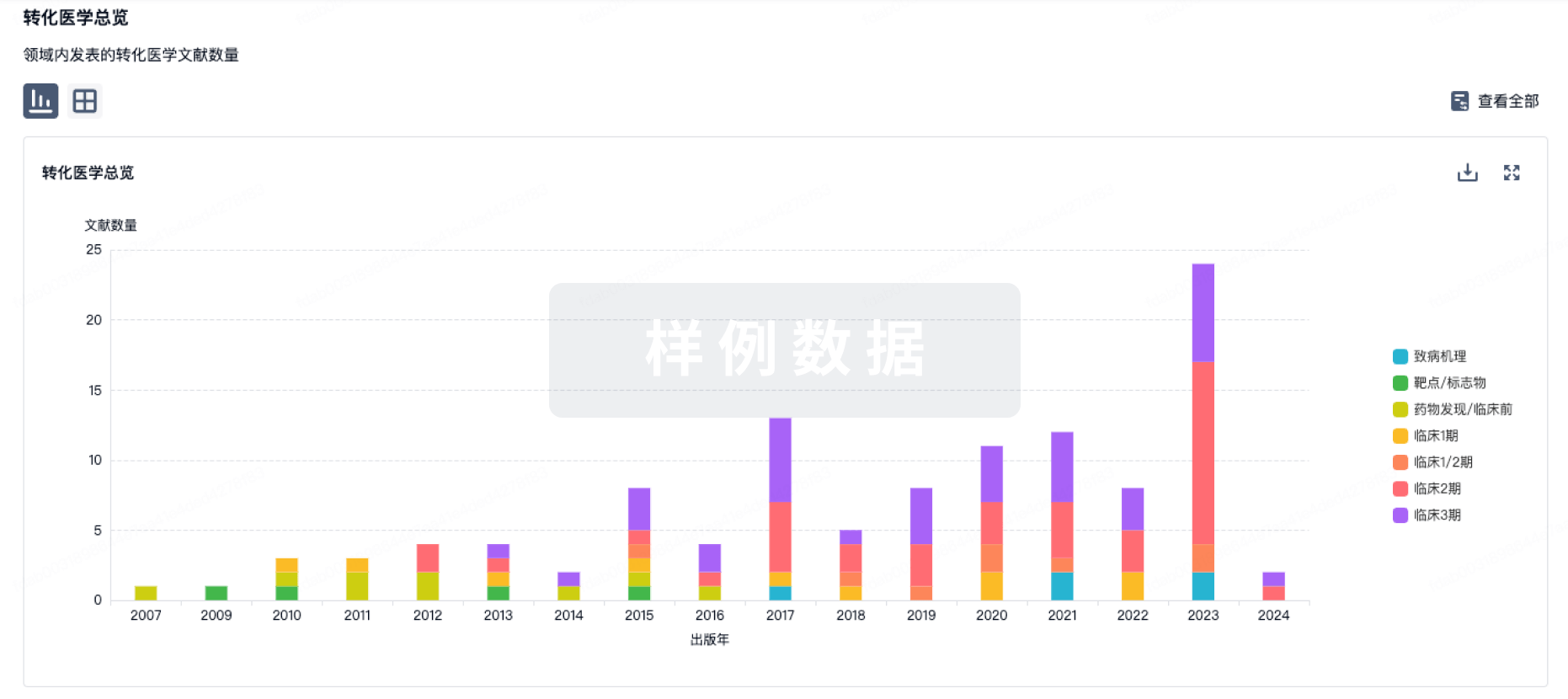
药物交易
使用我们的药物交易数据加速您的研究。
登录
或
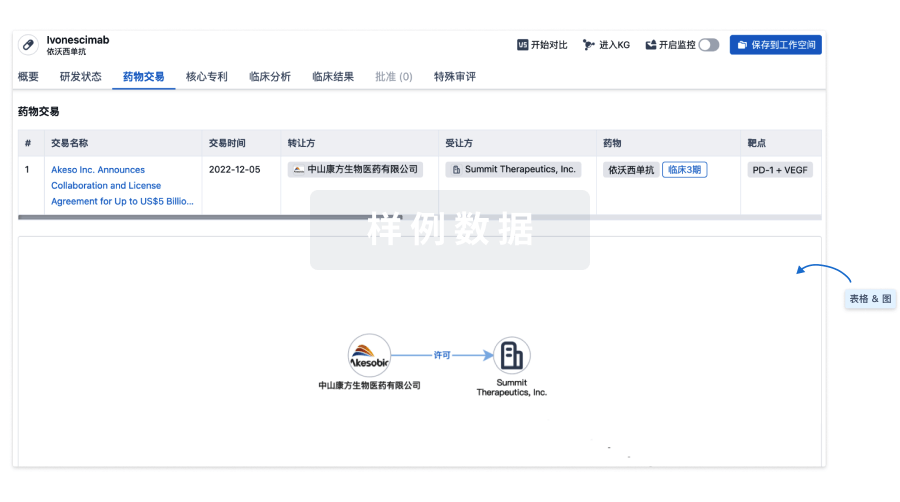
核心专利
使用我们的核心专利数据促进您的研究。
登录
或
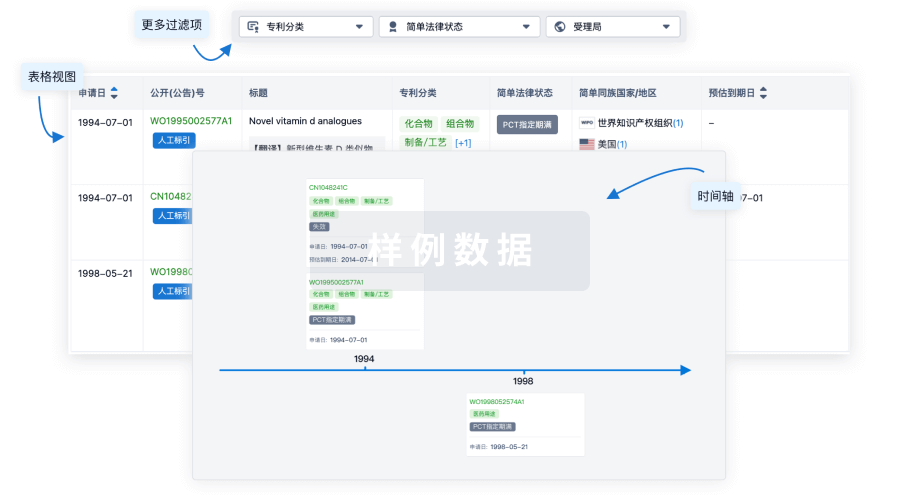
临床分析
紧跟全球注册中心的最新临床试验。
登录
或

批准
利用最新的监管批准信息加速您的研究。
登录
或

特殊审评
只需点击几下即可了解关键药物信息。
登录
或
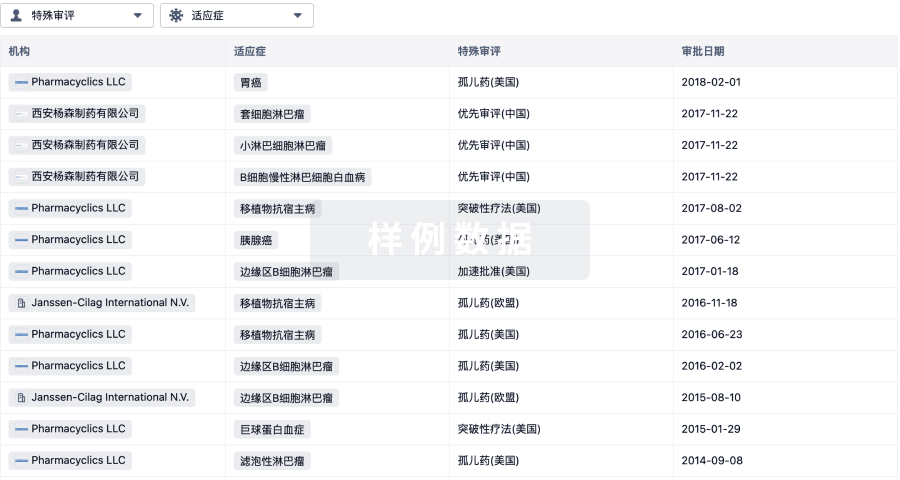
Eureka LS:
全新生物医药AI Agent 覆盖科研全链路,让突破性发现快人一步
立即开始免费试用!
智慧芽新药情报库是智慧芽专为生命科学人士构建的基于AI的创新药情报平台,助您全方位提升您的研发与决策效率。
立即开始数据试用!
智慧芽新药库数据也通过智慧芽数据服务平台,以API或者数据包形式对外开放,助您更加充分利用智慧芽新药情报信息。
生物序列数据库
生物药研发创新
免费使用
化学结构数据库
小分子化药研发创新
免费使用

